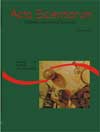<strong>Conflicts between the “old” and “new” in the works of Sophocles: an educational proposal for the formation of individuals accountable for their acts</strong> - DOI: 10.4025/actascihumansoc.v30i1.5100
Keywords:
social transformation, Sophocles, education, social conflict
Abstract
Even during the Classical Period (6th-5th centuries BC), at the peak of their artistic and intellectual achievements, Greeks were immersed in a state of conflict owing to profound changes within society. In spite of changes in the manner of living and in the organization and administration of society, the average Greek citizen failed to completely break away from the past. Traces of the ancient gentilic community were still remained in the polis in the way of thinking and living. Beliefs in the ancient religion did not apply to the new social organization and destabilized the community. When Sophocles perceived the conflict between the old secular order and the new social organization of the polis, he reflected in his literary works on the manner the Greek citizen could live within the contemporary city-state. The representations of conflicts between father and son, the new and the old were thus featured in his plays. The playwright imagined a man who, through knowledge, tried to solve the conflicts experienced, brought forth by a submission to ancient religion and belief in fate. This new man was accountable for his acts and his future.Downloads
Download data is not yet available.
Published
2008-09-18
How to Cite
souza, P. R., & Melo, J. J. P. (2008). <strong>Conflicts between the “old” and “new” in the works of Sophocles: an educational proposal for the formation of individuals accountable for their acts</strong> - DOI: 10.4025/actascihumansoc.v30i1.5100. Acta Scientiarum. Human and Social Sciences, 30(1), 57-66. https://doi.org/10.4025/actascihumansoc.v30i1.5100
Issue
Section
Philosophy and Education
DECLARATION OF ORIGINALITY AND COPYRIGHTS
I Declare that current article is original and has not been submitted for publication, in part or in whole, to any other national or international journal.
The copyrights belong exclusively to the authors. Published content is licensed under Creative Commons Attribution 4.0 (CC BY 4.0) guidelines, which allows sharing (copy and distribution of the material in any medium or format) and adaptation (remix, transform, and build upon the material) for any purpose, even commercially, under the terms of attribution.
Read this link for further information on how to use CC BY 4.0 properly.























